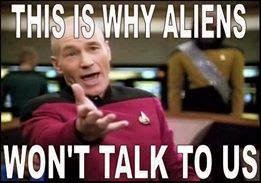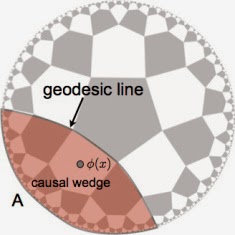Mobile Dock had to do more than power up for Leap. The process was painfully slow, consuming up to twenty hours. Dock techs also had to insure that the thousands of ships attached to its rings were stabilized for transit. A Mobile Dock was large enough to generate its own gravity field. Maintaining a balance between containment shield energy and gravitational forces was a delicate mental dance for intensely focused techs.
Draper knew this well. He…his host…served a stint as a Dock tech before transferring to Fleet duty. He knew every nook and cranny of a Dock even without consulting the schematic before him.
He was in his quarters. At this hour, those who shared his duty shift would have been slumbering in their rest pods. Draper was spent in the wake of the Ceremony celebration, but he had no intention of resting. Tens of thousands of crewmembers from docked vessels circulated inside Mobile Dock, enjoying its various amenities. Many off duty Horuk crewmembers were also inside the superstructure. It was time he joined them. He shut down his interface and the schematic vanished.
Before he turned away, a compulsion froze him. He reactivated his interface and brought up an image of his mate, the mother of his soon-to-be-offspring. His human side regarded the image unmoved, before a tide of fondness and affection washed away that disinterest. My beloved.
Draper reached to terminate the interface.
I am not done! The voice protested.
Draper shut down the interface for the final time, but felt a sharp pang of longing in doing so. “I am.” He rushed out of his quarters.
***
Mobile Dock’s interior consisted of an outer area of multiple public levels surrounding a core restricted to Staff. Draper walked along a wide thoroughfare bustling with ship crews and Dock personnel in bright green uniforms. The milieu was both familiar and spectacular. He tried to reference something human-built to compare with the Dock’s size, but fell pitifully short. Humans had fanned out across the Solar System, establishing full-blown colonies on Mars and Titan. A Mobile Dock dwarfed both colonies. How could we have ever prevailed over a force commanding such marvels of engineering? He pondered dismally.
The voice intruded: Yes. How could you? And what makes you think this folly of a mission you’re determined to carry out will succeed?
Draper came to a door that he knew led to Dock operations. He cleared his mind of all non-tangential thoughts, idled by the door for a few moments, and when he was certain no one was watching him, tapped a code on the door panel. The door hissed open and he slipped inside.
Draper hurried down a long, sterile corridor as the door shut behind him. At the end of the corridor he stopped at an elevator, summoned it, and boarded. A non-Staffer should not have been able to enter restricted parts of the Dock. But Draper, relying on his host’s memory and technical skills, had accessed…or hacked…the Dock’s primary computer, acquiring the access codes he needed.
“Low Point,” Draper ordered. Immediately, the elevator began a rapid descent on a six hundred-mile journey toward the Dock’s core. Five minutes later, the elevator halted, its door opening, revealing a maze of machinery.
From a human perspective, Low Point was a cluttered mess of churning, convoluted parts. Yet, his host knew every piece of hardware and how it operated and interrelated with the other.
Draper knew where he had to go and proceeded in that direction. He encountered a pair of green uniformed Staffers along the way.
They paused more curious than concerned about the presence of a non-authorized person at Low Point. Heritins were generally trusting of each other.
One of the Staffers started to query Draper on his identity. He barely finished the question. Draper produced a carbon-bladed stiletto from his right sleeve and slashed in precise, crisscrossing motions. He knew where and how to administer mortal wounds on a Heritin. When he was done, his victim crumpled to the floor, his neck and upper chest drenched in a copious flow of gold-tinted blood.
Draper turned his attention on the second Staffer, but hesitated.
The Staffer stared at Draper in shock and backed away.
Don’t kill him. He is Heritin. Like you.
“No!” Draper lunged at the Staffer, digging the stiletto deep into the other’s flesh in repeated, rage-driven strokes. “Not like me!”
Breathing heavily, Draper plopped down next to the Staffer’s body. “My name is Darryl Draper. I was born on Earth, Chicago, South Side. I…am human. I am human.”
With that said he rose slowly to his feet and ventured to the section housing the reactor. A minute later, he entered a massive room occupied by glimmering red dome, spanning a dozen football fields. A heavy vibration-producing hum issued from the dome.
Draper approached the behemoth, taking out a small disk-shaped object hidden in his tunic. This was what he came for. Draper fought through a relentless onslaught of guilt and second thoughts to reach this point. Now all he had to do was act.








